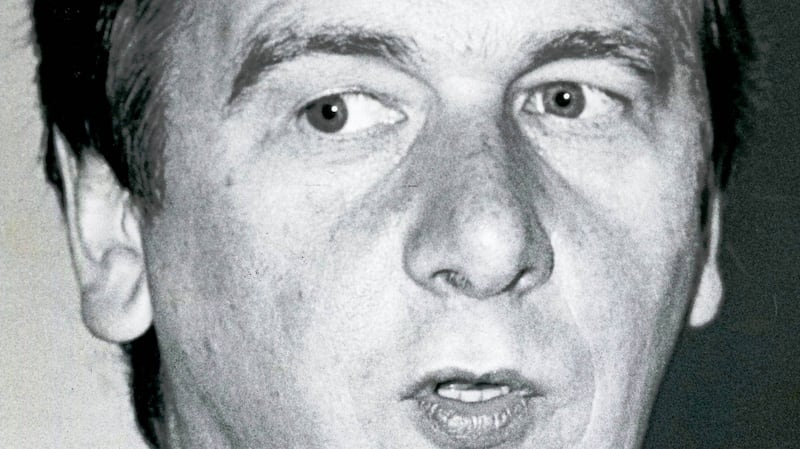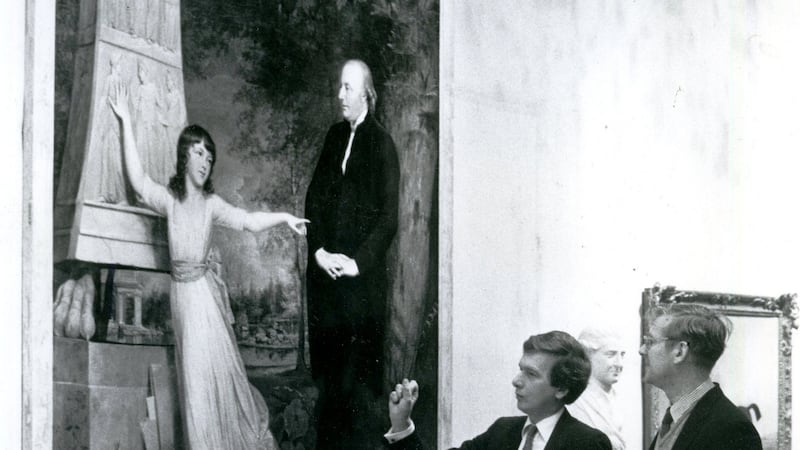Homan Potterton
Born: May 9th, 1946
Died: December 8th, 2020
Homan Potterton, who has died of cancer aged 74, was an original and productive art historian, a notably innovative director of the National Gallery of Ireland, and the author of graceful and feline memoirs and fiction.
He was born into a well-established Co Meath Protestant farming and auctioneering family, whose history, ramifications and properties he traced in Potterton People and Places: three centuries of an Irish family (2006). His own childhood, as one of eight siblings in a much-loved family house and farm near Trim, is recorded in his entrancing memoir Rathcormick: a childhood recalled (2001).
His aesthetic interests were encyclopaedic, and developing all the time, encouraged by enterprising travels in Germany and France
Later he would write that as a child he always felt “like a fish out of water”, but a revelatory summer in France when he was 16, and visits to Blois, Chartres and Versailles, led him to see he had “merely been swimming in the wrong pond”. After secondary education at Kilkenny College and Mountjoy School (unlikely nurseries for a dedicated aesthete) he began studying to be a solicitor, but found his métier when he switched to art history at Trinity with the great Anne Crookshank.
Realising his potential, she advised him to pursue postgraduate research at Edinburgh, where he studied with Alistair Rowan (after a chilly interview with Anthony Blunt at the Courtauld, which provided a hilarious set-piece in Potterton’s autobiography, Who Do I Think I Am?, 2017).
His thesis on Irish church monuments, published as a book in 1975, developed his discriminating eye for sculpture, further evidenced in his major contribution to Irish Art and Architecture from Prehistory to the Present (1978), written with Jeanne Sheehy and Peter Harbison. But his aesthetic interests were encyclopaedic, and developing all the time, encouraged by enterprising travels in Germany and France, employment by Desmond Guinness at the Irish Georgian Society, and then (from 1972) a job as cataloguer at the National Gallery under James White.
In late 1973 he was appointed an assistant keeper at the National Gallery in London, under Michael Levey’s directorship, and remained there till 1980 – the happiest time of his professional life. His achievements while there included curating a tremendous exhibition of 17th-century Venetian painting, with an important accompanying book (1979), and writing a best-selling guide to the gallery (1977), full of characteristic asides (“Wearing a dress like that, what else does she expect from a centaur?”).

In late 1979 Potterton was appointed director of the National Gallery of Ireland; there was much comment about his spectacularly young age, less about his record of heavyweight and wide-ranging publications. His memoirs frankly record the doubts he himself felt about returning to Ireland, and the difficulties of dealing not only with an obtuse and immovable Board of Works, but a taoiseach (Charles James Haughey) who claimed that neither the gallery nor its new director were truly Irish, and that “the more old pictures of Irish aristocrats that are exported from Ireland, the sooner the better”. But Potterton hit the ground running, producing the first concise catalogue of the collection (1981) and a definitive catalogue of the gallery’s Dutch paintings.
Though his own expertise was primarily 17th and 18th century Italian painting, he bought dazzling 20th-century works by Kees van Dongen, Chaim Soutine, Emil Nolde and Paul Signac. The gallery’s holdings were further transformed by the Maire MacNeill Sweeney Bequest (Juan Gris, Picasso) and, above all, by negotiating the gift of the phenomenal collection of paintings belonging to Alfred and Clementine Beit, subject of a memorable exhibition of Recent Acquisitions 1986-88. But this – to general astonishment – was his swan song at the gallery.
In eight years he had raised its profile immeasurably but felt frustrated by the refusal of officialdom to invest in desperately needed refurbishment (since magnificently achieved). The fine Andrew Festing portrait of Potterton in his office (1986) shows his faun-like good looks, but not his endearingly irrepressible grin, which may have been less in evidence in these years.

Potterton subsequently entered fine arts journalism, contributing to Apollo and editing the Irish Arts Review from 1993 to 2002. He divided his time between his pretty converted farmhouse in the Gaillac region of France, and a London base which he shared with his long-term partner Alex Heusen. He achieved success with his volumes of memoir and, in 2019, published a substantial novel, Knockfane, set in the strong farming Meath heartland which he knew so well, though he had left it far behind him.
His quick wit, and ability to spot human pomposities and foibles, could be merciless but never malicious. His extraordinarily wide social circle, wonderfully reflected in Who Do I Think I Am?, stood him in good stead; his friends remained friends for life.
Never self-important, his claim in his memoir that he was “not remotely an intellectual” should be taken with a heavy dose of salt. It is contradicted not only by his weighty list of publications, but by the imagination and originality of his too-brief reign in Merrion Square: everyone who walks through the gallery’s doors is in his debt. He is survived by four siblings – Alice, Edward, Raymond, David – and Alex.







